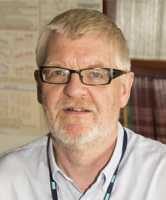06 Jun Music Making Causes Rapid Neuroplastic Changes in Brain
MedicalResearch.com Interview with:
Bernhard Ross, Ph.D.
Rotman Research Institute
Baycrest Centre
ON, Toronto
MedicalResearch.com: What is the background for this study? What are the main findings?
Response: We know from previous research that brain function for hearing is more strongly developed in musicians. The effect of a musician’s long-term training leads to a neuroplastic effect where their brain has more neurons involved in auditory processing. These neurons show stronger activity during listening to sound than in non-musicians and these findings strongly encouraged us to study neuroplasticity of the adult brain. We were interested in understanding why the neuroplastic effects of training and learning are so clearly expressed in professional musicians.
The study’s main finding was that actively making sound, by playing a musical instrument, changed brain responses for listening and perception. Most importantly, neuroplastic brain changes occurred very quickly, within one hour of listening and making sound. In contrast, brain changes were observed after days in previous studies that only had participants listening to sounds.
Another finding was that brain responses to hearing a sound are different when a person produces the sound themselves compared to listening to a recorded sound or a sound made by another person. This difference demonstrates that brain networks of intention, movement planning, movement execution, and expectation are involved when making a sound. We compared playing a real instrument with pressing a button for hearing a sound and found larger changes in the brain’s response to actively playing a musical instrument than pressing a button to elicit the same sound.
MedicalResearch.com: What should readers take away from your report?
Response: Auditory brain areas and sensorimotor brain areas are working closely together when actively making sound like playing a musical instrument. Learning-related neuroplastic changes in the auditory brain occur faster with active sound making compared to listening alone.
MedicalResearch.com: What recommendations do you have for future research as a result of this study?
Response: The study is part of a larger project studying whether musical activities could support rehabilitation after a stroke and studies pursuing the development of training programs for improving speech communication in noisy environments among older adults. Our current study encourages using the act of making a sound, such as playing a musical instrument, in these training and rehabilitation programs. Although not shown in our current study, these results will likely also apply to expressive speaking and singing. Moreover, some aspects of real activity may be more efficient than a computer based training program.
Further research could explore how we can use the coordination of multiple brain functions for more efficient rehabilitation training, as well as design training programs for improving listening abilities in noisy environments during aging. Other avenues of research include studying how the auditory and motor areas of the brain work together.
No disclosures
MedicalResearch.com: Thank you for your contribution to the MedicalResearch.com community.
Citation:
Bernhard Ross, Masihullah Barat, Takako Fujioka. Sound-making actions lead to immediate plastic changes of neuromagnetic evoked responses and induced beta-band oscillations during perception. The Journal of Neuroscience, 2017; 3613-16 DOI: 10.1523/JNEUROSCI.3613-16.2017
Note: Content is Not intended as medical advice. Please consult your health care provider regarding your specific medical condition and questions.
More Medical Research Interviews on MedicalResearch.com
[wysija_form id=”5″]
Last Updated on June 6, 2017 by Marie Benz MD FAAD

